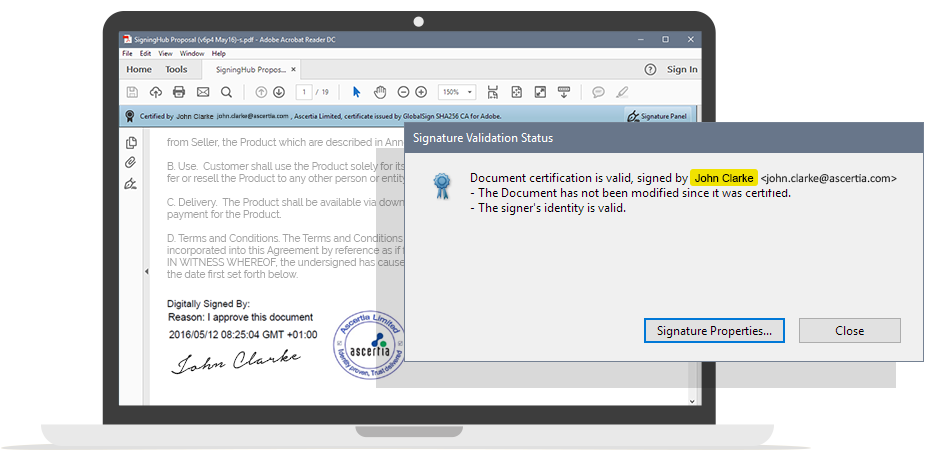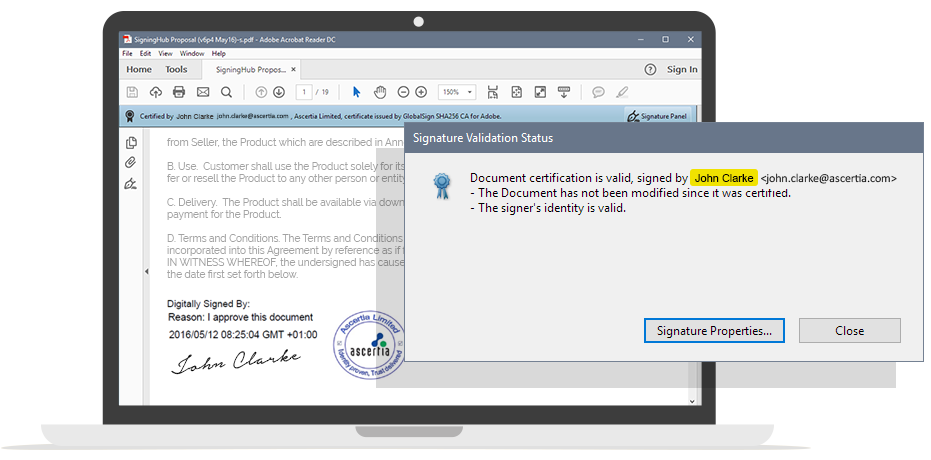Anyone new to this area can be easily confused about what constitutes a signature and how different types of signatures compare in terms of evidential power and legality.
At a basic level any mark on an electronic document can be used to capture the signer’s intent to approve or accept the contents of that document. The form of the “mark” or how it was created is not important. What is important is proving who made the mark and that the document was not changed subsequently.
Signatures
These involve the signer applying their signature mark on the document and then this being protected with a cryptographic digital signature. With signature having eSeal as a level of assurance, the crypto digital signature is created using a server-held signing key, e.g. belonging to the service provider organisation, hence we refer to this as a “witness” digital signature.
In SigningHub this witness digital signature is applied every time a signature mark (having eSeal as a level of assurance) is applied by the user and cryptographically binds this mark to the document and protects the document from any subsequent changes, thereby ensuring data integrity. This is a long-term signature that includes a trusted timestamp.
Normally basic e-signature may or may-not require the user to be registered and their identity validated as a part of this. Regardless of whether or not users are registered with basic e-signature the signer’s identity is not verifiable directly from the signed document.
Advanced and Qualified e-signature
Advanced Electronic Signatures (AES) and Qualified Electronic Signatures (QES) are fully supported in SigningHub. AES and QES provide the highest level of trust and assurance because these use unique signing keys for every signer. This directly links the user’s identity to the signed document such that anyone can verify it on their own using an industry standard PDF reader.

Furthermore, as the signer has sole control of their unique private signing key this ensures non-repudiation, i.e. even the service provider cannot be held responsible for creating the signature. SigningHub complies with eIDAS regulations for AES and QES using locally held credentials, such as a National eID card, or importantly remote signing where the user’s key is held securely, server-side. Remote signing has many benefits including the ability to sign from any machine without use of specialist devices like smartcards, hardware tokens and readers.
The advantage of using AES/QES is that they show exactly who signed the document.
QES are a more trusted version of AES because they require the highest levels of security for the protection of the user’s signing key and also a formal registration process for the user to verify their identity by a qualified Certificate Authority. From a legal perspective QES can be considered even stronger than handwritten signatures as the burden of proof shifts to the signer to prove that they did not sign!
Signing of Microsoft Word Documents
SigningHub also supports signing of Microsoft Word documents in their native XML format, see details.